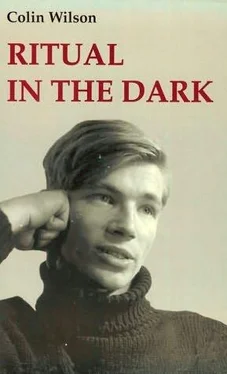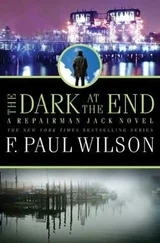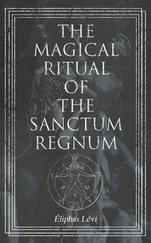Colin Wilson - Ritual in the Dark
Здесь есть возможность читать онлайн «Colin Wilson - Ritual in the Dark» весь текст электронной книги совершенно бесплатно (целиком полную версию без сокращений). В некоторых случаях можно слушать аудио, скачать через торрент в формате fb2 и присутствует краткое содержание. Жанр: Триллер, на английском языке. Описание произведения, (предисловие) а так же отзывы посетителей доступны на портале библиотеки ЛибКат.
- Название:Ritual in the Dark
- Автор:
- Жанр:
- Год:неизвестен
- ISBN:нет данных
- Рейтинг книги:4 / 5. Голосов: 1
-
Избранное:Добавить в избранное
- Отзывы:
-
Ваша оценка:
- 80
- 1
- 2
- 3
- 4
- 5
Ritual in the Dark: краткое содержание, описание и аннотация
Предлагаем к чтению аннотацию, описание, краткое содержание или предисловие (зависит от того, что написал сам автор книги «Ritual in the Dark»). Если вы не нашли необходимую информацию о книге — напишите в комментариях, мы постараемся отыскать её.
Ritual in the Dark — читать онлайн бесплатно полную книгу (весь текст) целиком
Ниже представлен текст книги, разбитый по страницам. Система сохранения места последней прочитанной страницы, позволяет с удобством читать онлайн бесплатно книгу «Ritual in the Dark», без необходимости каждый раз заново искать на чём Вы остановились. Поставьте закладку, и сможете в любой момент перейти на страницу, на которой закончили чтение.
Интервал:
Закладка:
Sorme looked at him closely. He sensed an underlying seriousness. For the first time, he was aware of an element of strain in Glasp; it came out also in the twitching forehead. He asked:
Are you serious about the aunt who was a victim of Jack the Ripper?
Quite serious. The last victim.
The woman who was killed in the room in Miller's Court?
No. There was another one. She was killed under a lamppost in Castle Alley. That was Great-aunt Sally McKenzie. I don't know much about her except she seems to have been the black sheep of the family.
I've never heard of that one…
He began to wonder whether Glasp was inventing the whole story. He said, smiling:
You seem to come from a family of victims.
That's right. All victims. Unconscious masochists. Except me. I'm a conscious masochist.
Are you?
Glasp smiled at his look of surprise. He said:
Not in Austin's sense. I don't go in for that.
Sorme moved the stool closer to the wall, so that he could lean back on it as he watched Glasp. There was something jerky and emphatic in the way Glasp painted, an intentness in his concentration on the canvas, that made Sorme think of a fencer. He said: I won't stay here talking any longer. It's probably just putting you off your work.
That's all right, Glasp said.
Sorme watched him, unspeaking for about five minutes. He said:
Would you mind if I had a look at some of the paintings in there?
Again he sensed Glasp's hesitation. He was on the point of saying: It doesn't matter… when Glasp said: Go ahead. But don't talk about them.
All right.
He went into the other room and looked at the canvases leaning against the walls.
The first thing that struck him was that their colours were harsher than in the canvases he had seen in Nunne's flat. The greens and blues, the dream-technique that showed the influence of Chagall, had disappeared. Here the drawing was crude and violent; it accentuated the discordance of the primary colours that seemed to have been applied straight from the tube. Most of them were nature studies: trees, a clump of irises, a wall overgrown with lichens; there was a painting of iron railings, with a street lamp that was painted without romanticism, or even an attempt at atmosphere. The canvases occupied the whole of one wall of the room.
On the far side of the fireplace, in a wide recess, hung an enormous, half finished canvas. It was at least four times as big as anything else in the room, being about six feet deep by four broad. At first glance he took it to be a Crucifixion. It showed a man nailed to a cross, and suspended from an open window. The cross appeared to be supported by several chains, and a pulley was visible through the window. One of the man's hands, pierced by a nail, hung by his side.
Sorme repressed the temptation to ask what it represented. He stood back, staring at it. As he stood there, he heard Glasp leave his painting and go out of the room.
The painting of the crucified man was high on the wall. Below it, leaning in the recess, were a number of canvases, stacked against one another. The topmost one showed the enormous frightened face of a boy. Behind his head, in the top left-hand corner, stood a chest of drawers, with three drawers pulled out, and what looked like some pink female undergarment hanging from the top drawer. From behind the boy's head protruded a bare arm, as of someone lying face downward on the floor. Sorme pulled the canvas forward, and glanced at the one behind it. This seemed to be in Glasp's earlier manner. It was a beautifully delicate painting of a naked girl. She looked about ten years old. She was standing in front of a fireplace, holding out a handkerchief to dry in both hands. Her arms and legs were thin, and the whole body had an air of undernourishment, yet Glasp had managed to utilise her thinness, to blend it with the orange firelight and the blue shadows of the room, to convey a sense of gentleness and nostalgia. Sorme found it curiously moving; he would have liked to take it from among the other canvases and stand it where he could study it better. Before he had decided to do this he heard the noise of a lavatory cistern flushing next door. He pulled the painting forward and glanced at the one behind it. It was another still life, with harsh colours and angular drawing. He let the canvases fall back into place, and turned to look at a study of a cornfield that leaned against the wall next to the sink. Glasp came back into the other room. He said:
Well?
You've certainly changed your manner, haven't you?
I hope so. Do you like these?
Very much. They're quite violently impressive. You ought to have an exhibition.
Can't be bothered. They're all bloody crooks. It's all string-pulling and arsehole-crawling.
Glasp came over and stood beside him. Sorme said:
What's this?
He pointed to the crucified man.
That's Matthew Lovatt. Classic case of attempted suicide.
When?
Oh. I'm not sure when. He was a shoemaker of Geneva some time in the eighteenth century. He got an obsession about wanting to die on a cross, like Christ. He made three attempts, all failures. The third time, he fixed up a sort of pulley in his bedroom, which overlooked the market place, and attached the cross so it could be lowered out of the window. His main problem was how to nail himself to the cross. He could nail his feet, and one of his hands, but the other hand puzzled him. He finally solved it by boring a hole in the cross, and piercing one of his hands with a nail beforehand. He then used the pierced hand to wield the hammer to nail his feet and the other hand. Having done that, he released the pulley, and let the cross shoot out of the window, over the market place. Unfortunately, he was too weak by that time to insert the nail in the hole he'd bored for it — so he hung there.
Glasp gestured at the canvas, where the naked man hung like a deflated Petrouchka. Sorme said:
Did he die?
No. They got him down, and he lived to be eighty or so. Never made the attempt again, either.
Will you finish it?
Oh yes. When I have time…
What about this one?
He pointed to the face of the boy.
Glasp said, shrugging:
I don't like that. It was supposed to be Heirens, the Chicago killer.
I've never heard of him. Who was he?
A seventeen-year-old boy. He used to climb in through windows and steal women's underwear. When the women interrupted him, he killed them. On the wall, over one victim, he scrawled in lipstick: For God's sake catch me before I kill again.
Sorme pulled a face. He said:
It's a pretty ghastly subject for a painting. Don't you think it's a little morbid?
Of course. The condition itself is morbid.
He turned and went back into the other room. Sorme said:
What about the canvases behind this one? May I look?
Glasp turned round; he said sharply:
No. I'd rather you didn't. I don't like them.
Sorme followed him. His tea was still on the stool, half finished. He drank it in one draught. He felt that it was awkward to try and express his admiration for Glasp's paintings; Glasp had so obviously conditioned himself not to care about praise or blame.
He said finally:
Thanks for letting me see them.
That's OK.
Uncertain what to add, Sorme allowed his eyes to wander around the room. They stopped at a reproduction of Van Gogh hung over the bed. It was hung in a position where he had not been able to see it from his place on the stool.
You admire Van Gogh?
Glasp said: Yes.
He turned round and looked at the reproduction. It was badly lit, being on the same wall as the window, opposite the door.
Glasp said: That's my idea of a great painting.
Why do you think so?
For the same reason that my Matthew Lovatt and William Heirens are failures.
Читать дальшеИнтервал:
Закладка:
Похожие книги на «Ritual in the Dark»
Представляем Вашему вниманию похожие книги на «Ritual in the Dark» списком для выбора. Мы отобрали схожую по названию и смыслу литературу в надежде предоставить читателям больше вариантов отыскать новые, интересные, ещё непрочитанные произведения.
Обсуждение, отзывы о книге «Ritual in the Dark» и просто собственные мнения читателей. Оставьте ваши комментарии, напишите, что Вы думаете о произведении, его смысле или главных героях. Укажите что конкретно понравилось, а что нет, и почему Вы так считаете.












